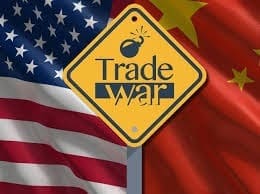Though the RBI maintained its growth projection for FY19 at 7.4%, it has alluded to risks on account of protectionist measures and further escalation in trade tensions in its policy statement. There are two dimensions to the risks to macroeconomic stability from trade tensions. One dimension, of course is that if the global economy slows down, it could result in contraction in global trade and hit our export volumes. The second dimension is that of the policy response of central banks globally to counter the effect of trade war i.e. the risk of trade war eventually turning into a currency war. For example, the PBoC has allowed the Yuan to depreciate to mitigate the effect of tariffs imposed by the US. This has resulted in the Rupee strengthening by almost 6% on a relative basis against the Yuan since May. The relative Rupee strength not only makes our exports uncompetitive in the global market but also impinges on our domestic industry on account of import substitution as Chinese imports become cheaper.
In the most recent phase of concerted global growth, our export growth has been tepid. While a part of it can be attributed to demonetization and GST implementation induced challenges, the fact that export growth is still muted points to the fact that Rupee overvaluation has also had a role to play. The elasticity of our exports to the Rupee has increased. The sectors worst affected by Rupee overvaluation would be the ones that export undifferentiated goods as these goods can be easily substituted by exports from other countries such as Vietnam, Bangladesh and Sri Lanka. Rupee overvaluation is therefore a significant concern as exports account for roughly 20% of our GDP.
The RBI therefore is walking a very tight rope, as it has to strike a delicate balance between inflationary consequences of Rupee depreciation and risks to export growth and domestic industry on account of Rupee overvaluation. So far, the RBI seems more concerned about Rupee depreciation as is evident from aggressive intervention around the 69 mark. The RBI would certainly not want a repeat of a 2013 like situation when there was extreme pessimism that resulted in a speculative run on the currency. Runaway depreciation of the Rupee in the lead up to the general election can trigger a confidence crisis and jeopardize the chances of the incumbent government. The aggressive intervention strategy has worked so far and has kept the speculators at bay.
With the US mid term elections approaching, it is unlikely that there would be any softening of protectionist rhetoric from the Oval office. With China too pledging to reply in kind, there does not seem to be any immediate end to the tensions. The Rupee is therefore likely to closely track the Chinese Yuan and the spread between the offshore CNH and onshore CNY. The RBI is likely to intervene less aggressively if the Yuan and other EM currencies continue to depreciate. The endeavor of the RBI would be to manage the real effective exchange rate of the Rupee (REER), preventing extreme overvaluation and to contain volatility by smoothening the pace of Rupee depreciation. The downside in USDINR looks limited as of now (unless there is a massive global unwinding of USD longs) as the RBI would be keen to replenish its lost Reserves on every dip. 68.10-68.20 zone is expected to be a strong support for USDINR. It would not be a surprise if 7 on the Yuan is seen which in turn could trigger a break of 69.20 levels on the way to 70.

